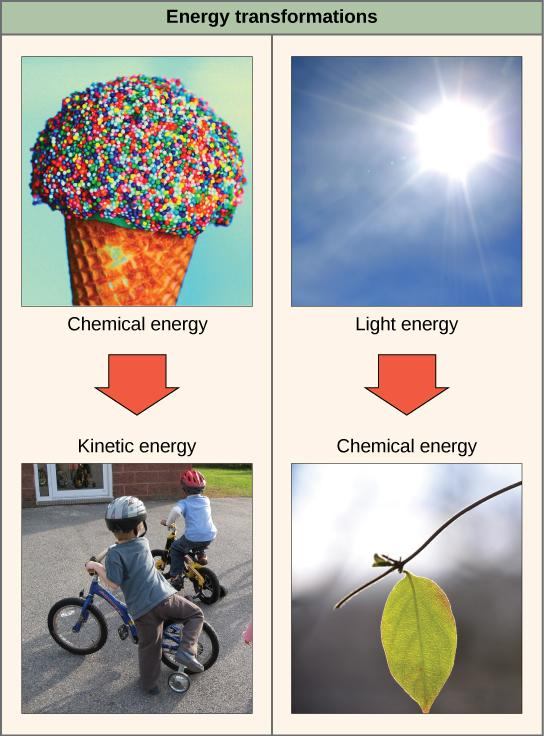
The law of conservation of energy implies that the:
A) Total mechanical energy is conserved
B) Total kinetic energy is conserved
C) Total potential energy
D) Sum of all kinds of energies is conserved
Answer
216k+ views
Hint: The energy is the ability of the body to do some useful work. It is present in the universe as many forms into thermal energy, potential energy, kinetic energy, electrical energy, nuclear energy and mechanical energy. It has the ability to transfer from one body to another.
Complete step by step solution:
The law of conservation of energy states that the total energy always remains constant for an isolated system. The energy is neither created nor destroyed but it can change from one form of energy into the other. These energies can be converted into one another, when the external force is applied and the work is done. There is no new energy created or it is deleted from the total energy.

Hence the sum of the total of all the energy in the system always remains the same. When we consider the total mechanical energy, there will be both the potential energy and the kinetic energy. The potential energy at first before motion, converts into the kinetic energy after movement. Hence the total mechanical energy is the sum of the both potential energy and the kinetic energy.
Thus the option (D) is correct.
Note: Let us consider the example of the tube light. When the tube light glows, the electrical energy from the power supply is converted into the light energy and some of the heat energy as the loss. But the total electrical energy is equal to the sum of the heat and light energy produced.
Complete step by step solution:
The law of conservation of energy states that the total energy always remains constant for an isolated system. The energy is neither created nor destroyed but it can change from one form of energy into the other. These energies can be converted into one another, when the external force is applied and the work is done. There is no new energy created or it is deleted from the total energy.

Hence the sum of the total of all the energy in the system always remains the same. When we consider the total mechanical energy, there will be both the potential energy and the kinetic energy. The potential energy at first before motion, converts into the kinetic energy after movement. Hence the total mechanical energy is the sum of the both potential energy and the kinetic energy.
Thus the option (D) is correct.
Note: Let us consider the example of the tube light. When the tube light glows, the electrical energy from the power supply is converted into the light energy and some of the heat energy as the loss. But the total electrical energy is equal to the sum of the heat and light energy produced.
Recently Updated Pages
Circuit Switching vs Packet Switching: Key Differences Explained

Mass vs Weight: Key Differences Explained for Students

Alpha, Beta, and Gamma Decay Explained

Alpha Particle Scattering and Rutherford Model Explained

Angular Momentum of a Rotating Body: Definition & Formula

Apparent Frequency Explained: Formula, Uses & Examples

Trending doubts
JEE Main 2026: Application Form Open, Exam Dates, Syllabus, Eligibility & Question Papers

JEE Main Correction Window 2026 Session 1 Dates Announced - Edit Form Details, Dates and Link

Derivation of Equation of Trajectory Explained for Students

Hybridisation in Chemistry – Concept, Types & Applications

Understanding the Angle of Deviation in a Prism

Understanding Collisions: Types and Examples for Students

Other Pages
JEE Advanced Marks vs Ranks 2025: Understanding Category-wise Qualifying Marks and Previous Year Cut-offs

Units And Measurements Class 11 Physics Chapter 1 CBSE Notes - 2025-26

NCERT Solutions For Class 11 Physics Chapter 8 Mechanical Properties Of Solids

Motion in a Straight Line Class 11 Physics Chapter 2 CBSE Notes - 2025-26

NCERT Solutions for Class 11 Physics Chapter 7 Gravitation 2025-26

How to Convert a Galvanometer into an Ammeter or Voltmeter




